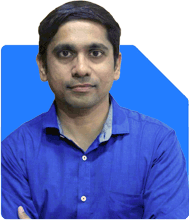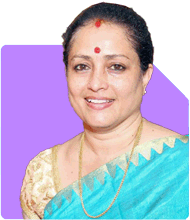32-Year-Old IT Professional with High Income: How to Save and Maintain Lifestyle?
Ramalingam Kalirajan |6292 Answers |Ask -Follow
Mutual Funds, Financial Planning Expert - Answered on Jul 19, 2024
He has an MBA in finance from the University of Madras and is a certified financial planner.
He is the director and chief financial planner at Holistic Investment, a Chennai-based firm that offers financial planning and wealth management advice.... more

Hi, my name is Sumit and I am 32 years old IT professional. My and my wife's combined income is 2.08 lakh per month. Our home loan is running at 65k monthly emi. Currently i have 2 SIPs which are 5k in Elss and 5k in Flexi cap. Can you suggest best investment plan in which we can save as much as possible and maintain life style as well.
Let's break down your financial plan for maximum savings and maintaining your lifestyle.
Current Monthly Income and Expenses
Combined Income: Rs 2.08 lakh
Home Loan EMI: Rs 65,000
SIPs: Rs 10,000
This leaves you with Rs 1.33 lakh for other expenses and savings.
Investment Strategy for Maximum Savings
1. Emergency Fund
Maintain an emergency fund equivalent to 6-12 months of expenses. This fund should be in a savings account or liquid funds.
2. Increasing SIP Contributions
Consider increasing your SIP contributions in equity mutual funds for long-term growth.
Flexi Cap Fund: Continue with your Rs 5,000 SIP in Flexi Cap funds.
ELSS Fund: Continue with your Rs 5,000 SIP in ELSS for tax savings under Section 80C.
3. Diversifying Your Portfolio
Diversify your investments to balance risk and returns. Here are some recommendations:
Large Cap Funds: Allocate Rs 5,000 monthly to large cap funds for stable returns.
Mid Cap Funds: Allocate Rs 5,000 monthly to mid cap funds for potential growth.
Small Cap Funds: Allocate Rs 5,000 monthly to small cap funds for high growth potential.
4. Retirement Planning
Start planning for retirement early. Allocate Rs 5,000 monthly to a retirement fund or a Public Provident Fund (PPF). PPF offers tax benefits and secure returns.
5. Child Education and Future Goals
If you have children or plan to, start saving for their education. Allocate Rs 5,000 monthly to a child education plan or a balanced mutual fund.
6. Health Insurance
Ensure adequate health insurance for your family. This protects your savings in case of medical emergencies.
Monthly Investment Plan
Emergency Fund: Maintain liquidity for emergencies.
Flexi Cap Fund: Rs 5,000 SIP
ELSS Fund: Rs 5,000 SIP
Large Cap Fund: Rs 5,000 SIP
Mid Cap Fund: Rs 5,000 SIP
Small Cap Fund: Rs 5,000 SIP
Retirement Fund/PPF: Rs 5,000
Child Education/Goal Fund: Rs 5,000
Total Monthly Investment: Rs 35,000
Managing Expenses and Lifestyle
Track Expenses: Use apps or spreadsheets to track and manage expenses.
Budgeting: Create a monthly budget to ensure you live within your means.
Discretionary Spending: Allocate a portion of your income for leisure and lifestyle expenses. This ensures you enjoy your lifestyle while saving.
Tax Planning
ELSS Funds: Continue investing in ELSS for tax benefits.
Section 80C: Maximize deductions under Section 80C through PPF, ELSS, and other eligible investments.
Professional Guidance
Consult with a Certified Financial Planner (CFP) for personalized advice. A CFP can help tailor your investments to your goals and risk tolerance.
Final Insights
Sumit, focus on building an emergency fund, increasing SIPs in diversified equity funds, and planning for retirement and children's education. Track your expenses and budget wisely to maintain your lifestyle while saving effectively.
Best Regards,
K. Ramalingam, MBA, CFP,
Chief Financial Planner,
www.holisticinvestment.in
You may like to see similar questions and answers below
Hemant Bokil |77 Answers |Ask -Follow
Financial Planner - Answered on May 25, 2023
Ramalingam Kalirajan |6292 Answers |Ask -Follow
Mutual Funds, Financial Planning Expert - Answered on May 05, 2024
Ramalingam Kalirajan |6292 Answers |Ask -Follow
Mutual Funds, Financial Planning Expert - Answered on May 13, 2024
Ramalingam Kalirajan |6292 Answers |Ask -Follow
Mutual Funds, Financial Planning Expert - Answered on Jul 18, 2024
Dr Karthiyayini Mahadevan |1065 Answers |Ask -Follow
General Physician - Answered on Sep 14, 2024
Dr Karthiyayini Mahadevan |1065 Answers |Ask -Follow
General Physician - Answered on Sep 14, 2024
Dr Karthiyayini Mahadevan |1065 Answers |Ask -Follow
General Physician - Answered on Sep 14, 2024
Dr Karthiyayini Mahadevan |1065 Answers |Ask -Follow
General Physician - Answered on Sep 14, 2024
Dr Karthiyayini Mahadevan |1065 Answers |Ask -Follow
General Physician - Answered on Sep 14, 2024
Pradeep Pramanik |166 Answers |Ask -Follow
Career And Placement Consultant - Answered on Sep 14, 2024
Milind Vadjikar |131 Answers |Ask -Follow
Insurance, Stocks, MF, PF Expert - Answered on Sep 14, 2024
Ramalingam Kalirajan |6292 Answers |Ask -Follow
Mutual Funds, Financial Planning Expert - Answered on Sep 14, 2024
Ramalingam Kalirajan |6292 Answers |Ask -Follow
Mutual Funds, Financial Planning Expert - Answered on Sep 14, 2024
Pradeep Pramanik |166 Answers |Ask -Follow
Career And Placement Consultant - Answered on Sep 14, 2024










.jpg)











